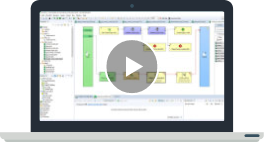Quick Start Guide


Introduction
Before you jump into building your own very first data transformation and exploring the extensive range of CloverDX's capabilities, be sure to check out this platform overview which explains some of the fundamental concepts you should know before you start.
Introduction (6 min)
First look around the Designer
The Designer is the place where developers spend most of their time building, testing and debugging data jobs. In this chapter we'll explore the user interface of the Designer so that you can always find what you're looking for.
Look around Designer (4 min)
Building your first data transformation
Hello World time! Let's build your first data transformation in CloverDX! We'll start from scratch and build a simple data transformation that reads a CSV file, performs some basic validation and mapping and will put the results in a database. There's a lot to learn in this one.
Building first transformation (29 min)
Project development & deployment cycle
Now that you've successfully built a data job, let's discuss what a typical workflow of a developer looks like. We'll cover the differences between working locally vs working on the Server, and will briefly touch the overall approach to moving your project from initial prototype to a production environment.
Project development lifecycle (11 min)
Automating data pipelines
Automation is the bread and butter of CloverDX and we'll be discussing three major ways of automating your data pipelines - scheduling, Data Services (publishing data jobs over APIs) and event listeners. You'll learn how to take your job and put the Server to work so that everything runs on autopilot.
Automating data pipelines (16 min)
Jobflows orchestration
When data pipelines become more complex, simple data transformation graphs are not enough - you need something more powerful to orchestrate larger jobs and CloverDX comes in handy with its concept of Jobflows. We'll expand our example to utilize jobflows for a task of listing files and running our transformation on each file.
Jobflows orchestration (10 min)
Additional useful info about the Server
In previous chapters we talk about key features of the CloverDX Server. However, there's a lot more to the Server and some concepts are worth knowing from the very beginning, as it affects how you think about your data projects. We'll cover options for version control, user permissions, configuration backup, Server API for automation, and much more.
Additional info about Server (7 min)